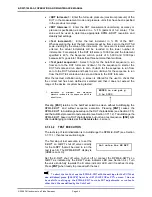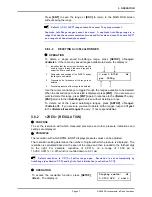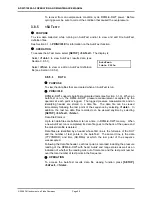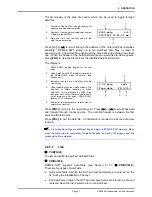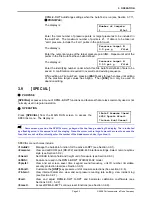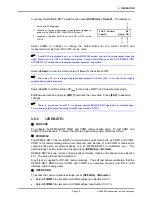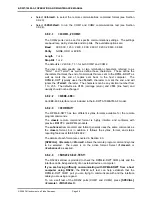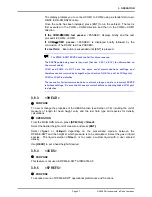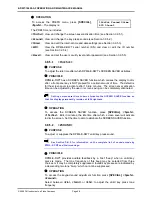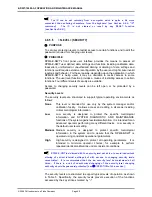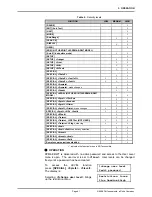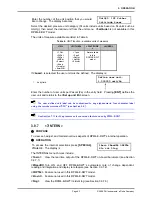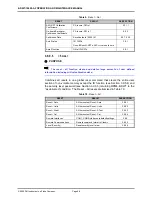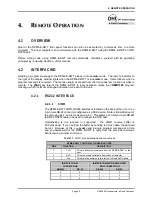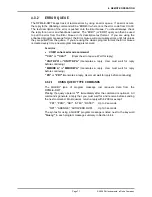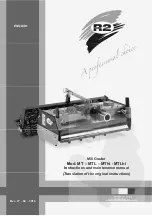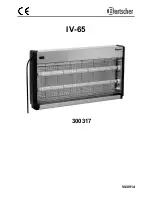
E-DWT-10000-AF OPERATION AND MAINTENANCE MANUAL
© 2008 DH Instruments, a Fluke Company
Page 56
•
Select
<4format>
to select the remote communications command format (see Section
3.9.2.3).
•
Select
<5RS232test>
to run the COM1 and COM2 communications test (see Section
3.9.2.4).
3.9.2.1
<1COM1, 2COM2>
The COMx ports can be set for specific communications settings. The settings
are baud rate, parity, data bits and stop bits. The available options are:
Baud
300, 600, 1 200, 2 400, 4 800, 9 600, 19 200, 28 800, 38 400
Parity
NONE, ODD or EVEN
Length
7 or 8
Stop Bit
1 or 2
The default is <2 400, E, 7,1> for both COM1 and COM2.
The user can also specify one or two termination characters, referred to as
“Term1” and “Term2”, as well as define these characters. These define the
characters that mark the end of commands that are sent to the RPM4-E-DWT as
well as mark the end of replies sent back to the host computer. The
RPM4-E-DWT typically uses the
<Term1>
character to mark the end, and will
ignore the
<Term2>
character. The characters can be any decimal number from
1 to 255. The defaults are
<13>
(carriage return) and
<10>
(line feed) and
usually should not be changed.
3.9.2.2
<3IEEE-488>
An IEEE-488 interface is not included in the E-DWT A70M/A7M-AF model.
3.9.2.3
<4FORMAT>
The RPM4-E-DWT has two different syntax formats available for the remote
program commands.
The
classic
remote command format is highly intuitive and conforms with
previous
DHI
PPC and RPM4 products.
The
enhanced
remote command format generally uses the same commands as
the
classic
format, but in addition it follows the syntax, format, and status
reporting features of IEEE Std 488.2.
The details of each format are covered in Section 4.3.
[SPECIAL]
,
<2remote>
,
<4format>
allows the remote program command syntax
to be selected. The cursor is on the active format. Select
<1classic>
or
<2enhanced>
as desired.
3.9.2.4
<5RS232 SELF-TEST>
The RS232 self-test is provided to check the RPM4-E-DWT COM ports and the
interface cable independently of an external device or computer.
If you are having difficulty communicating with RPM4-E-DWT from a host
computer using RS232,
the RS232 self test can help establish that the
RPM4-E-DWT COM1 port you are trying to communicate with and the interface
cable you are using are good.
To run a self test of the RS232 ports (COM1 and COM2), press
[SPECIAL]
,
<2remote>
,
<5RS232test>
.



